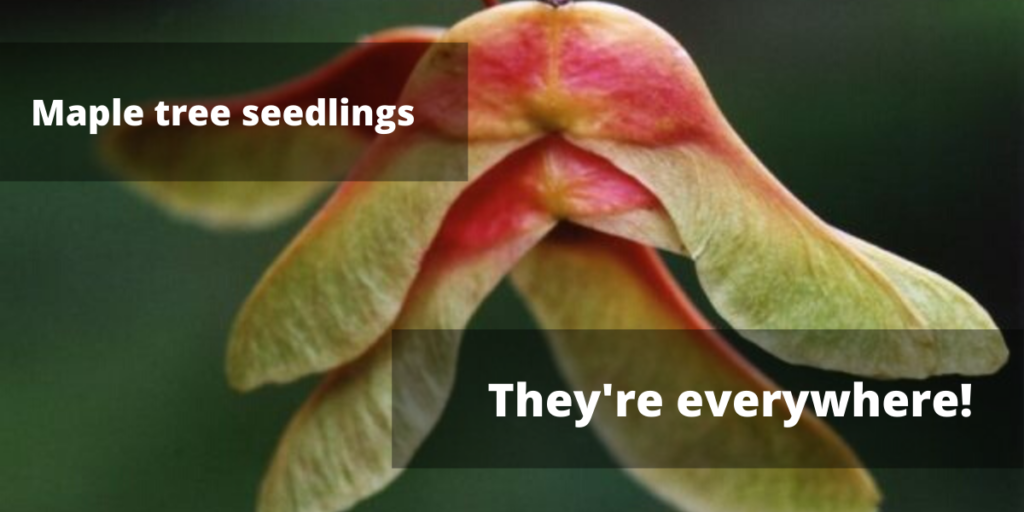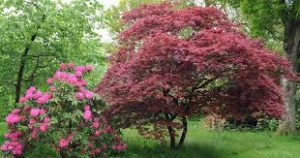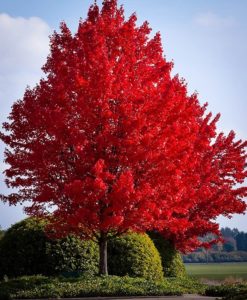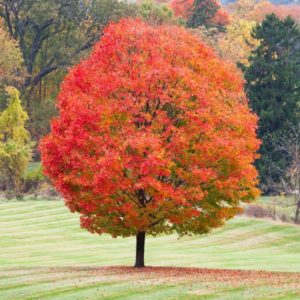News
Maple Tree Seeds: Everything You Need To Know
Every year, the return of spring is a welcome change from winter. After months full of snow, slushy sidewalks, slick roads, and cold weather, the warmer temperatures, sunshine, and all the color returning to nature is so wonderful it almost makes you feel like throwing a party!
Well, as we slip into late spring and early summer, you may begin to notice that party guests have started arriving. Flying in, to be more exact. It’s the maple tree seed explosion.
Maple trees drop their seeds towards the end of spring. As fun and majestic as they may be to watch fall down, they can be quite a headache and create copious amounts of yard work for homeowners. Maple tree seeds fill up lawns and flower beds like little green party umbrellas, sidewalk cracks, and clog gutters and downspouts.
What do maple tree seeds look like?
Maple tree seeds go by different names like “helicopters” or “whirlers” depending on what you called them when you were a child. Regardless of what you call them, everyone knows the signature twisting, swirling, winged seeds that fall from maple trees every year.
These helicopter seeds consist of two conjoined wings, each surrounding a seed. Each winged section is technically known as a samara, which blow away from their trees as they attempt to find, purchase and grow into a maple tree one day themselves.
While other trees such as ash trees and elm trees produce samaras of their own, their seeds are only one wing. Maple trees are the only trees that drop true helicopter seeds, making them unmistakable.
Are there different types of maple seedlings?
There are 14 different varieties of maple trees common in North America. Each one produces helicopters, but because there are so many different types and the differences in how they look, it can be difficult to tell the difference between them.
Of the 14 varieties, however, there are three that you are most likely to find in your lawn. Here are some of the maple tree seedling varieties you may find in your lawn and how you can tell them apart.
Japanese Maple Seedlings: These are the brilliant, bright red maple trees that may have fern-like leaves.
Red Maple Tree Seedlings: The red maple is named for its red flowers, red fruit, red twigs, and, of course, its brilliant red fall foliage.
Sugar Maple Seedlings: The sugar maple tree has bright green leaves with five lobes that have no jagged edges.
Why are there so many maple tree seeds?
All trees require some amount of work and clean up during the year. Anyone with a Rose of Sharon bush in their landscaping knows that all of those beautiful summer blossoms require some clean up work – now and later. Don’t even get us started on all the leaf raking that has to happen during the fall either.
So with all the work that other trees and bushes create over the year, why is it that there always seems to be so many maple tree seeds every year? The answer is that maples are especially good at reproducing themselves.
When they fall, helicopter seeds can be scattered and fly a fair distance by the wind as opposed to other samaras with just one wing. Many seeds lose their potency or are eaten as food by hungry animals. But for those that survive until winter, thick blankets of snow insulate the seeds from cold and animal hunger. When that snow finally melts, these seeds have ideal conditions in which to slowly germinate.
And, because each helicopter carries two seeds, each individual helicopter’s chances of surviving and finding a place to grow are that much better. It’s a very efficient means of plant reproduction.
Where should I look for maple seedlings?
Clearing away fallen maple tree seeds isn’t just important for helping to keep your lawn tidy. Doing so helps keep maple seedlings from sprouting where you don’t want them too. If left unchecked, maple tree root systems can damage cement work, and trees too close to buildings can pull off paint, siding, or roof shingles as they grow.
As soon as you see maple tree seeds begin to fall, you need to spring into action to start the clean up process. Using a rake is the best way to clean up helicopter seeds off your lawn and flower beds since they fall in such large quantities. As the year goes on, regularly examine the foundations of your house, garage, and other outbuildings to make sure there aren’t trees sprouting nearby.
How do I remove maple seedlings growing in my lawn?
If a stray maple seedling begins to grow somewhere it shouldn’t, take action right away. You’re better off pulling them as soon as possible when their root systems are immature and the soil is still a bit damp.
In this state, maple tree seedlings will be easier to pull yourself with a little bit of know how. Later on, it will be much more of a chore. Here are some tips for removing the maple tree seedlings from your yard.
- It is easier to pull unwanted plants out of moistened soil, so be sure to water the area with the tree sprouts slowly and deeply a day or two prior to treatment. Additionally, plants are more susceptible to herbicides if they are not under drought stress.
- Remove as much of the root system as possible by pulling or digging up small tree seedlings by hand. Any amount of the root system that is left can result in the seedling returning.
- For large sprouts too big to pull or dig up, cut them off at ground level before brushing an undiluted, nonselective herbicide such as glyphosate onto the freshly cut surface. Don’t do this, however, if the unwanted sprout is growing out of the root system of a desirable tree.
- Leave sprouts that are growing out of a tree’s root system untreated, as most herbicides can injure the tree. Instead, simply ensure that the sprout is cut off at the soil surface.
- Monitor the grassy area regularly for the appearance of new seedlings, and pull up the young unwanted plants, or cut them off at ground level as soon as possible after you notice them.
Once they have had a chance to mature, removing maple trees and seedlings can become quite tricky and difficult to do yourself. Fully and safely removing the tree and root system of maple trees and maple seedling with the help of a professional will help you avoid damaging the surrounding landscape or your property during maple tree and root removal.
If you need help removing trees that have embedded themselves in fences, rock walls, near buildings, or any other unsuitable places, make Chop your first call. With the large amount of maple trees here in Michigan, our team of arborists have extensive experience in maple tree removal and know how to remove even the most stubborn tree offenders without damaging your property and preserving your surrounding landscape.
To learn more about our tree removal services, contact Chop at 616-920-6898 or request a quote online.
Want to learn more about tree health and tree care? Check out these other great articles:





